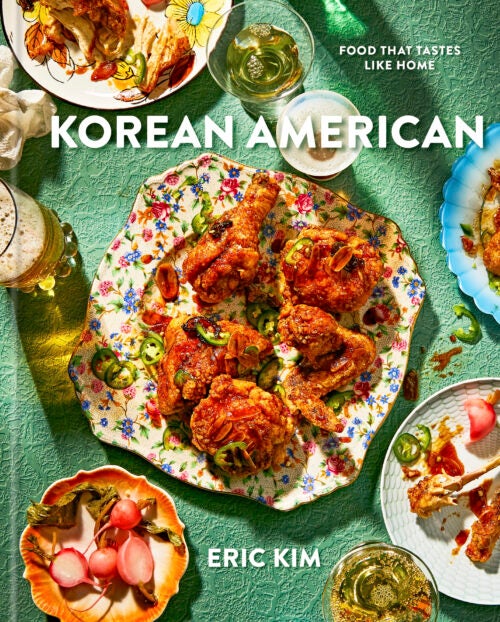










This is one of my favorite Korean restaurant dishes: the milkiest ox bone soup, gentle and savory, with soft nests of wheat-flour noodles resting at the bottom of the bowl and a shower of raw scallions and garlic floating on top. But there was a point, living in New York City, when I saw the price of this dish increase.
It used to cost less than $10 for a bowl, now it’s nearly double; not only that, but the soup at these restaurants has also become more and more diluted with water. Nothing is more depressing than watching your favorite childhood foods become too expensive for you to eat (except for perhaps watching them become diluted, too). Which is why this is one of those dishes that is absolutely worth making yourself at home, not least because when you cook this yourself, you can double the noodle amount. The noodles were always my favorite part anyway, and my bowl never seemed to have enough. A true seolleongtang is about the milky broth, to be sure, and the somyeon noodles are secondary. But I’m an adult now, so let’s stop dilly-dallying: My version is a noodle dish. Even with the increased carbohydrates here, I still like to eat this with white rice like you would at a restaurant (because I would never say no to a little double-carb action). The bones are an initial investment, yes, but you’ll see that you can get at least two to three more uses out of them (see Note on page 118). And anyway, the soup will become whiter and whiter, milkier and milkier, the more you use the bones. (It’s the marrow, in case you were wondering.) You’ll be surprised at how many tries it takes to truly deplete them of their milky store. As Jean told me years ago over the phone, it takes time for the bones to let off their goodness. This is the kind of thing you’ll want to cook on a long weekend, when you have the three hours required to really let the bone broth go.
I do find that a quick last-minute gremolata, made simply by tossing a handful of ingredients together, helps to brighten things up and entice the belly. You can use whatever fresh herbs you like, but in homage to the original seolleongtang, I call for thinly sliced scallions for vegetal heft, grated raw garlic for mild heat, and a sprinkle of flaky sea salt (the crunchy kind) for texture and pops of saline. It sounds fussier than it is, but don’t skip it. It makes a huge difference in the eating experience and tastes wonderful.
4-6 servings
- In the biggest pot you’ve got, add the beef bones and brisket and cover by 2 inches with cold tap water. Bring to a boil over high heat and cook for 10 minutes so the impurities from the bones rise to the surface of the water. Drain, discarding the cooking liquid, and rinse the bones in the sink. Return them to the pot, cover by 2 inches with more cold tap water, add the onion, and set over high heat. Bring to a boil, then reduce the heat to medium-low, loosely cover with a lid, and cook at a gentle boil until the stock is rich and milky, 3 to 3½ hours. (You can add more water if the liquid reduces too much—you want there to be 4 to 6 cups of broth in the pot.)
- In the last few minutes of cooking, in a small bowl, mix together the scallions, garlic, and flaky sea salt. Season with black pepper and set aside.
- When the stock is rich and milky, strain it in a colander set over a large bowl. Take the brisket out and let it cool slightly until it’s easier to handle; when it’s manageable, slice it thinly against the grain, and return it to the empty pot. Discard the onion and scallions. If there’s any meat or yummy cartilage clinging to the beef bones, remove it and place it in the pot as well (or enjoy as a chef’s treat). Cool the bones and then freeze them in a plastic bag to use another time; they can be reused another two or three times (see Note).
- Pour the stock back into the pot with the brisket meat and trimmings. Bring to a boil over high heat and, using a ladle, skim any excess fat if you’d like.
- Divide the somyeon noodles among the bowls and top with the hot broth. Serve with white rice, radish kimchi (if using), and the scallion gremolata on the side, to be sprinkled over the noodles as desired.
- Note Though you could use any marrow-rich beef bone, you’ll be able to find these specific sagol (from the knuckles, feet, and shin, all great for a rich, milky seolleongtang) in the freezer section of Korean and other Asian supermarkets, often labeled “beef bones.”
- Place the rice in a sieve and hold it under cold, running water, shaking it often, until the water runs clear.
- Place the rinsed rice and 1 cup water into a small pot and let the rice soak for 10 minutes.
- Set the pot over high heat and let the water come to a simmer, then reduce the heat to low, cover the pot, and continue simmering for 20 minutes. After 20 minutes, remove from the heat and let it sit, still covered, for 10 minutes to steam and get fluffy. (Don’t peek, as much of the cooking happens in this resting stage.) Fluff with a fork before serving

